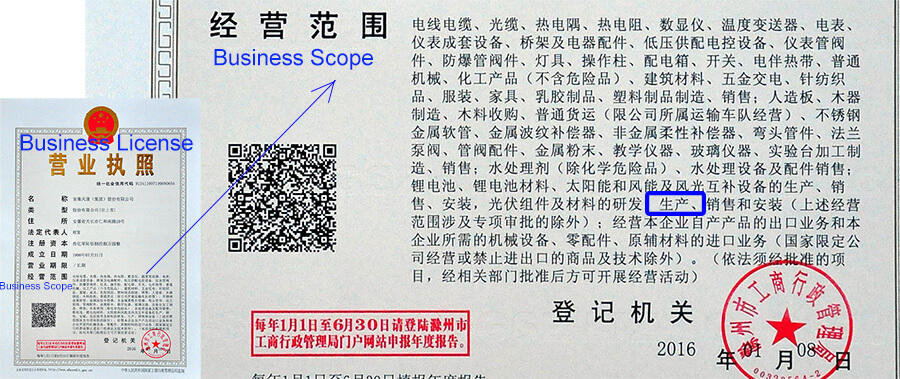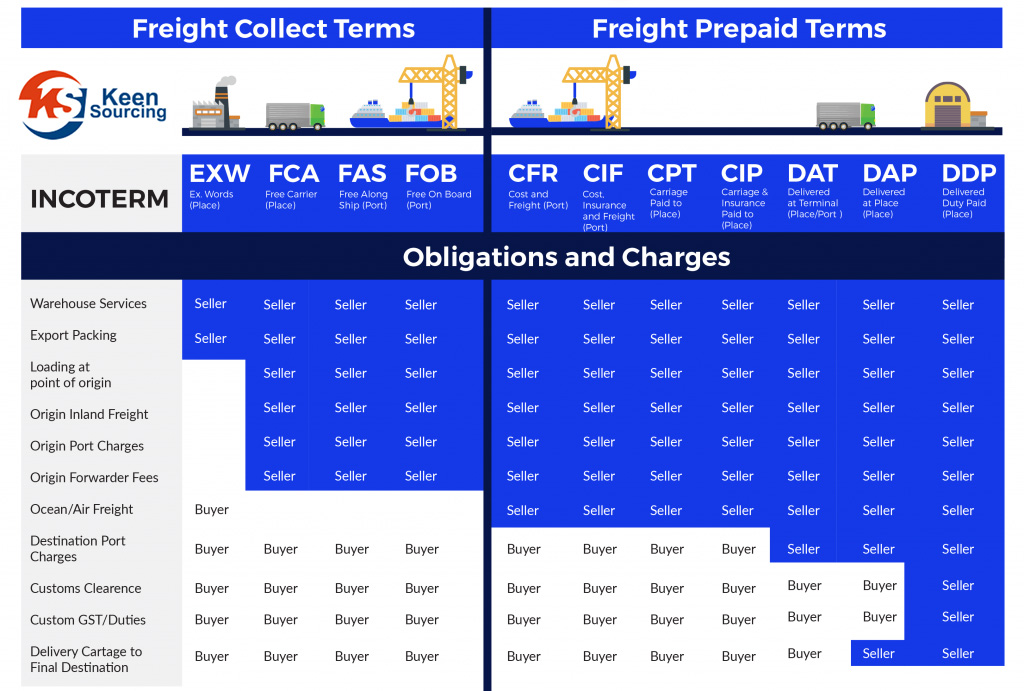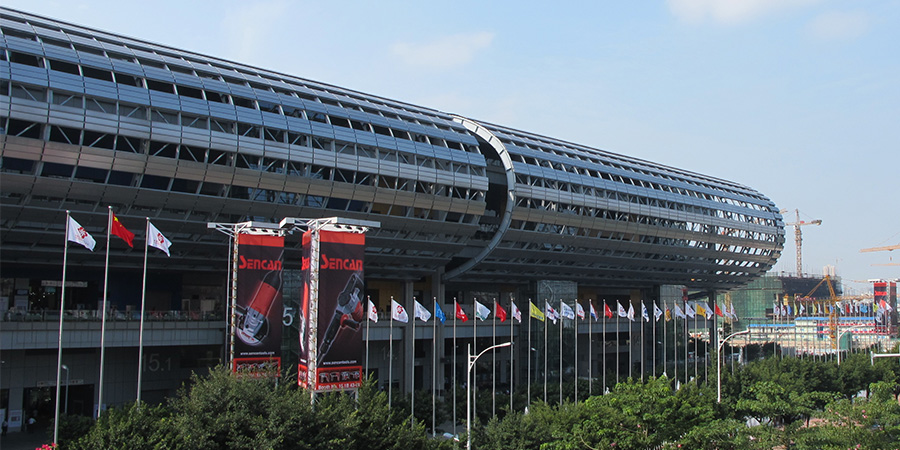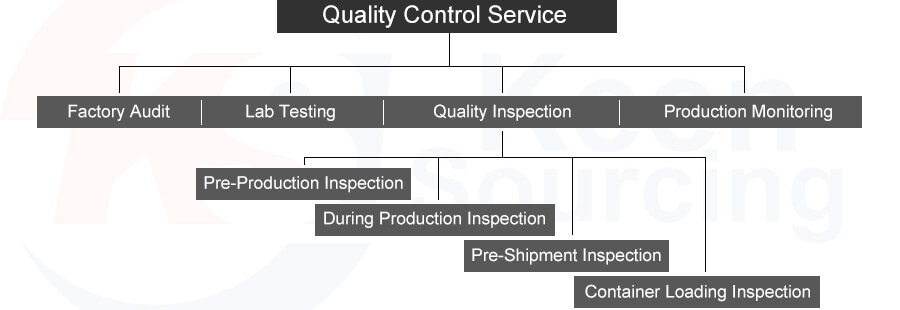Complete Guide: How To Import From China
Many people want to import goods from China, but they do not have any international trade experience, and they are worried about language barriers, complicated international trade procedures, scams, or lack of product quality management experience, and thus lack the confidence to try.
Although there are many tutorials on the Internet that teach you how to import from China, most of them are not suitable for current small businesses, startups, kickstarters, crowdfunding companies or e-commerce importers.
This guide prepared by Keen Souricng provides detailed instructions on how to import from China. You can also easily learn all the knowledge of the entire import process from choosing profitable products, verifying suppliers to importing customs clearance. Enjoy your learning.
Choosing the right products to import from China, they can bring you considerable profits.
Import popular products
If you have rich experience in marketing development and mature marketing channels, please import popular products. Popular products like 20 oz tumblers have a large market demand. If you have a complete distribution system and strong promotion capabilities, this is a very good choice.
Unique and innovative everyday products
People usually buy ordinary daily products directly from large retailers. If you want to sell ordinary products, you can try to adjust the product design to make it unique.
For example, ZAMAT Contour Memory Foam Pillows and Plixio brand Memory Foam Pillows have annual sales of millions of pieces. Unlike ordinary pillows, their memory foam pillows have a shape that conforms to the human body curve, allowing consumers to relax and treat their cervical spine very well, so they are very popular.
Niche products
A niche product means that the product has many unique characteristics that are different from other products, and it can also be recognized by consumers. Niche market means fewer competing products and consumers are more willing to pay more for them. But Niche products, you need to act quickly before the market is full of competitors and occupy as much market share as possible. Has accumulated a reputation in the market. For such products, the profit margin is usually considerable.
Take the water bidets (ClearRear) products that can be easily installed as an example. Starting from the spring of 2020, Ejam, Inc. has sold hundreds of thousands of units per month, which is very profitable. Due to the impact of COVID-19, supermarket toilet paper has been sold out, and water bidets that can be easily installed have become very popular in the market. This type of bidet does not even need to be connected to the power supply.
The way to search for Chinese suppliers online is fast and cost-effective. This is the main method for international buyers to find Chinese suppliers. Online management of overseas supply chains is being welcomed by multinational corporations and startups because of the timeliness and low cost.
Baidu.com
Baidu is China’s largest search engine, which includes the official websites of almost all Chinese suppliers. Make good use of Baidu, you can find the suppliers you want.
Sogou.com
Sogou is the second largest search engine in China. We can also use it to find suppliers.
Bing.com
Linkedin.com
Some Chinese suppliers have established company homepages on Linkedin, which provides a new search channel for overseas buyers interested in importing from China.
Find Suppliers at trading shows / exhibitions / fairs
The Canton Fair is the largest exhibition in China. There are hundreds of thousands of exhibitors every year. There are hundreds of large and small exhibitions in major cities in China such as Beijing, Shanghai, Guangzhou and Shenzhen every year. In the small and medium-sized cities of various provinces such as Hangzhou, Ningbo, Wenzhou, Jinhua, Dongguan, Zhongshan, Nanjing, Suzhou, Wuxi and industrial clusters, there are also many industry exhibitions.
Learn More About Trade Shows in China: Top 10 Trade Fairs in China
The Canton Fair
Find suppliers at Chinese wholesale markets
Many large and medium-sized cities in China have wholesale markets for different products. Both Yiwu International Trade Market and Shanghai Hardware Wholesale Market are relatively well-known wholesale markets. In the wholesale market, you can find many small and medium wholesalers and traders. The product quality ranges from high-end to low-end. If you want to buy spot goods, then the wholesale market is a good choice for you to find suppliers.
There are so many suppliers in China for you to choose from, and you must be puzzled how to identify reliable suppliers from them. A good supplier is an important factor in the success of your international procurement. The following are the methods and steps on how to verify suppliers.
Check Business License
By checking the supplier’s business license, I can focus on the company’s establishment time and business scope.
- It is better for the supplier’s company to be established for longer than 2 years. The product quality of the new company is unstable and the team members are unstable.
- Good supplier: The product range is concentrated in a certain industry rather than broadly to many industries.

Factory Audit
Factory Audit is a cost- and time-effective way to prepare a complete profile of your potential supplier, ensuring they will become a reliable part of your global supply chain. With a Factory Audit Report in hand you will be able to confirm that the audited factory is capable of delivering to your production specifications, address and prevent potential further costly disruptions once production is launched.
Click and know more about Factory Audit
When you negotiate prices, delivery dates, payment terms, etc. with suppliers, you need to pay special attention to the term Incoterms. Different trade terms imply different responsibilities, costs and risks for buyers and sellers. This will affect the offer accordingly. The 5 most commonly used in actual business are listed below for reference.
EXW price
Refers to the completion of delivery when the supplier delivers the goods to the buyer at its location or other designated locations (such as a workshop, factory or warehouse) for disposal, and the seller does not go through export customs clearance procedures or load the goods on any means of transportation. Under this clause, the supplier is not responsible for any shipping costs. That is, the buyer arranges to pick up the goods from the supplier’s warehouse. Therefore, if you do not have your own freight forwarder or you are a novice, this term is not recommended.
FOB price
When the goods cross the ship’s rail at the designated port of shipment, the seller completes the delivery. This means that the buyer must bear all risks of loss or damage to the goods from that point on. The FOB term requires the seller to go through customs clearance procedures for the export of goods. FOB quotation = original product cost + freight from the supplier’s warehouse to the agreed port in China + export processing fee.
CIF price
“Cost, insurance and freight” means that the seller completes the delivery when the goods pass the ship’s rail at the port of shipment. CIF quotation = original product cost + transportation cost from supplier warehouse to port in your country/region + insurance + export processing fee.
DDP price
The seller completes the import customs clearance procedures at the designated destination, and delivers the goods that have not been unloaded on the delivery means of transport to the buyer to complete the delivery. The seller must bear all risks and costs of transporting the goods to the designated destination, including any “taxes and fees” that should be paid at the destination when customs formalities are required (including the responsibilities and risks of customs formalities, as well as the payment of handling fees, Duties, taxes and other fees).
DDU price
The seller delivers the goods to the buyer at the designated destination for disposal, without going through the import formalities, and without unloading the goods from the delivery vehicle, that is, the delivery is completed. The seller shall bear all risks and costs of transporting the goods to the designated destination, excluding any “taxes and fees” (including the responsibilities and risks of handling customs Handling fees, duties, taxes and other fees). The buyer must bear this “tax and fee” and the costs and risks caused by the failure to timely import the goods and customs clearance procedures.

All suppliers promised that the product quality is very good. Before you choose a supplier and place an order, you should ask for samples and evaluate whether the supplier’s product quality meets your requirements, evaluate whether their existing products are what you want, and evaluate whether the supplier can produce customized products according to your requirements.
Sample checking includes visual inspection, functional test, and reliability test.
Usually the sample fee will be refunded after you place the mass production order.
After evaluating the quality of the sample, there are other 8 basic factors that will determine which supplier you will eventually work with.
Low price but reasonable
When you compare quotations from different suppliers, you can’t just look at the numbers. You need to compare the material type, thickness, size, weight, etc. stated on the quotation. Some suppliers offer very low prices, but they use thinner materials and the actual product size is too small. You may need to eliminate the highest and lowest quotations.
Willingness to cooperate
Suppliers’ willingness to cooperate is an important evaluation factor for your selection of suppliers. If a supplier is of good quality but has no willingness to cooperate, you should not choose it. There are many factors that affect the willingness to cooperate, and I will not elaborate on them here.
Salesman’s English level
When you encounter a Chinese supplier who is not fluent in English, you repeat your requirements over and over again, and your supplier still does not produce products in accordance with your requirements. This is time-consuming and desperate.
Compare lead time
Delivery time refers to the time required to produce and prepare all products for shipment after you place an order. If you have multiple suppliers to choose from and the prices are similar, it is best to choose a supplier with a shorter delivery time.
Consider transportation solutions and transportation costs
If you don’t have a trusted freight forwarder, and you prefer suppliers to help you handle logistics, then you have to compare not only product prices, but also logistics costs and solutions.
Confidentiality agreement
If you are purchasing a custom design product and you paid for tooling / mold / plate cost, then the supplier must be willing to sign an NDA agreement.
Solutions for defective products
Reliable and responsible suppliers usually have complete solutions for defective products.
Payment terms
The prevailing payment terms are 30% advance payment + 70% final payment before shipment. The payment terms for mold fees are 50% advance payment before mold opening and 50% payment after sample approval. Suppliers who offer too much advance payment are not suitable for cooperation.
Sign the proforma invoice and arrange the deposit.
Quality control is a very important and difficult step in international procurement. Quality control is usually achieved by laboratory testing, production monitoring and quality inspection.
The four types of quality inspections that can help you achieve your quality control goals.:
Pre-production inspection
Pre-production inspection tells the buyer which kind of raw materials (or components) will be used. Factories are often suspected of lowering their costs by purchasing substandard materials, and this can be disastrous for the buyer (e.g. the wrong kind of chip in an electronic device).The pre-production inspection can also focus on the processes followed as production starts. Sometimes this can also be critical, as Chinese factories very often cut corners and do not respect the buyer’s blueprints (e.g. patterns for cutting fabric are received from the buyer, and they are modified to make the process easier and faster).
During production inspection
A during production inspection (also called “DUPRO inspection” in the industry) allows the buyer to have an idea of average product quality, early in the production cycle. It is the most useful and the most under-rated tool at the disposal of importers, who often only rely on final inspections. It usually takes place once some finished products have come out of the lines. If quality issues are found, what is already produced might be re-workable, and corrective actions can be taken for the rest of the job. It gives buyers the time to plan ahead, and even to avoid delays (repairs and re-inspections take much more time when problems are noticed after all production is finished).
Final inspection
The final inspection (also called “pre-shipment inspection”) is by far the most common type of QC check. It takes place once 100% of shipment quantity is finished and at least 80% is packed, so it can be a real random inspection (this is not exactly the case if quality is checked earlier earlier) and suppliers cannot play games. It puts pressure on suppliers and gives power to buyers. Its objective is really to confirm a shipment’s quality, rather than catching issues early. Therefore it is better to complement final inspections with a DUPRO, to avoid finding disasters at the last minute, if the schedule is quite tough.
Container loading inspection
The container loading inspection, like the pre-production inspection, it is seldom used. But it can be a worthwhile option in some specific cases. It can be useful if the buyer has a precise loading plan and needs it to be respected very precisely (e.g. some cartons are too fragile to be placed at the bottom), or if the packaging is not conventional (e.g. some garments hung on bars, with no carton protection). It can also ensure that the right kind of products are shipped out in the right quantity, when the importer places no trust in his supplier or when several suppliers bring their products for consolidation.
After the production is completed and pre-shipment inspection passed, the next important step is to ship the product to you from China. There are 7 common modes of transportation:
- Express delivery
- Sea freight
- Air freight
- Railway freight
- Truck transportation
- Sea/air and express for e-commerce
- Direct economic transportation for dropshipping (less than 2 kg)
Express delivery (< 500 kg)
If the weight is less than 500kg, you can choose express. It is a service provided by major companies such as DHL, UPS, FedEx, TNT, and SF Express. It only takes 3-5 days to express from Shanghai, China to California. Shipping costs vary depending on the destination. Shipping costs from China to North America and Western Europe are usually US$6-7 per kilogram.
Air freight (> 500 kg)
In this case, you should choose air freight instead of express. You need to provide relevant compliance certificates during the customs clearance process in the destination country. Although slightly more complicated than express delivery, air freight will save money than express delivery. That’s because the calculated weight of air freight is about 20% less than that of air freight. For the same volume, the volumetric weight formula for air freight is length×width×height, and then divided by 6000, while air freight is 5000.
Sea Freight (larger than 2 cubic meters)
For these cargo larger than 2 cubic meters, sea freight is a good choice. Shipping to areas near the west coast of the United States is about US$100-200/m3, shipping to areas near the east coast of the United States is about US$200-300/m3, and shipping to the central region of the United States is about US$300/m3 and more than US$200-300/m3. Generally speaking, the total freight by sea is about 85% lower than that by air.
Railway transport
This railway is very suitable for countries in Eastern Europe and West Asia far away from the seaports. The cost is about twice that of sea transportation, and the railway transportation time is half of 15-20 days. This adds value because less transportation time can help many people relieve cash flow pressure.
The biggest disadvantage of rail freight is the limited number of countries that can be reached along the China-Europe Railway.
Freight per box of container cargo = reserve price 1 + reserve price 2 × freight kilometers
Tank containers and other special railway containers are calculated at the freight rates specified in the “Railway Tariffs” plus 30% and 20% respectively; general-purpose 20-foot containers with a total weight of 30.480 tons are calculated as specified in the “Railway Tariffs” calculation table. The price is calculated by adding 20%, unless the total weight of the container is limited to less than 24 tons according to the regulations.
Truck transportation
The China-Europe freight train route opened up all-road transportation between Europe and China and opened up the fourth logistics channel between China and Europe in addition to air, sea, and rail transportation.
China-Europe truck flights are suitable for companies with limited cargo but high timeliness requirements. Taking the German-Soviet route as an example, China-Europe air transport is more than half faster than rail, and the cost is 40% cheaper than air transport, providing companies with more logistics options.
Sea/air and express for e-commerce
A few years ago, some smart forwarders combined shipping and express delivery. They help many customers share a complete container to ship to the west coast of the United States, and require a local courier company like UPS to deliver it from the port to the address in the United States. The good news is that you can even transport small cargo weighing about 50-100 kg, even ordinary LCL (smaller than container loading) is impossible.
Combined transportation
The total freight is about US$2/kg, which is about twice the total cost of ordinary shipping. However, the transportation time from the Chinese port to the final destination in the United States is only about 20 days, which is 20%-50% faster than ordinary sea transportation.
A similar solution combines air freight and local express companies. Compared with air express express, the cost is reduced by about 20%, but it is only a few days slower.
This is the most popular transportation solution for e-commerce sellers, especially Amazon FBA sellers, because it is cheap and suitable for small batch transportation. If you want to choose this kind of transportation solution, it is best to ask a freight forwarder in China who is specifically responsible for shipping to Amazon.
Direct economic transportation for dropshipping (less than 2 kg)
Dropshipping sellers cannot afford the air express cost for most packages weighing less than 1 kg.
Logistics arrangement is the most difficult step for fresh new international buyers. In this step, they usually need the assistance of a sourcing agent.
The last step of import from China is customs clearance. In the process of China’s export customs clearance, various products need the following documents:
- Contract
- Commercial invoice
- Packing list
- Bill of lading
- Certificate of origin
Some special products require additional certificates. Usually, the supplier or sourcing agent company will handle the export customs clearance.
In the process of import customs clearance, there are also some standards or documents that are formulated in accordance with the requirements of your country’s customs. But as with the export process, 5 documents are required, including commercial invoices, contracts, packing lists, bills of lading, and certificates of origin. But different countries or products have different requirements. This needs to be confirmed by contacting the local customs.
Regarding tariffs: The value-added tax rate of different European countries is 19-21%, and that of China is 16%. There is no value-added tax in the United States, and import tariffs are about 3%. Different import tariffs for different products





